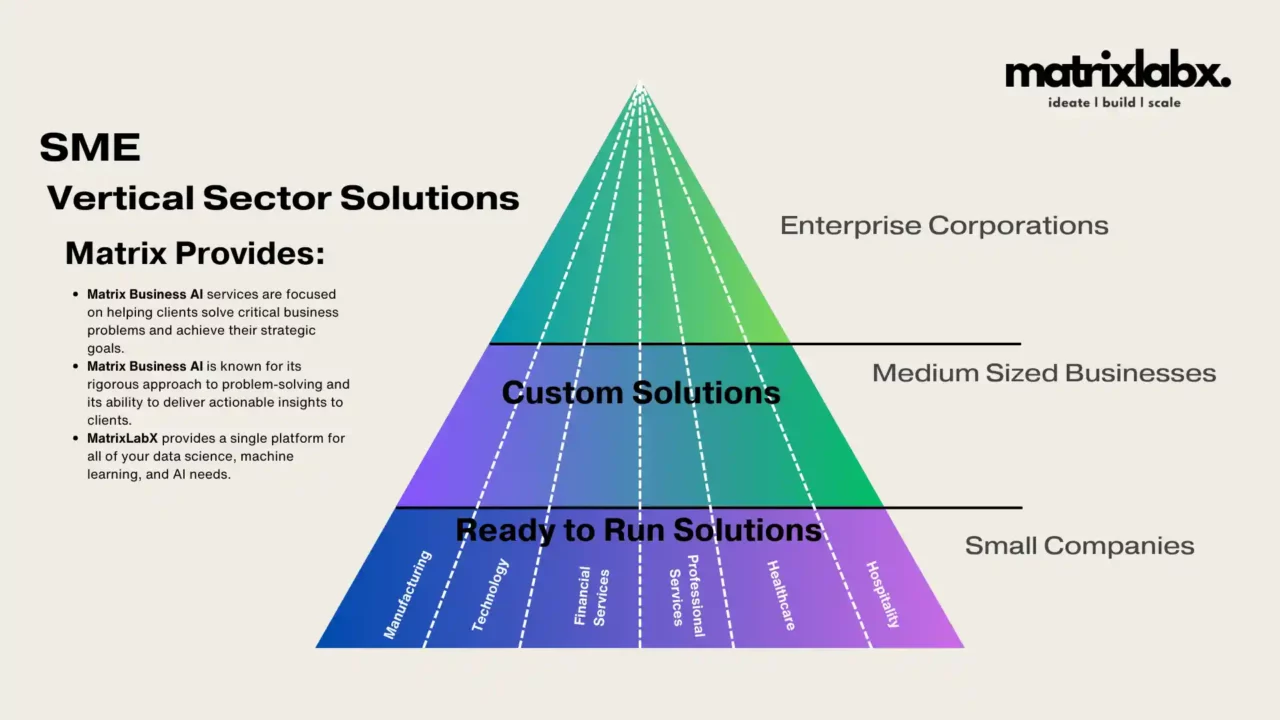Product managers want to increase product adoption.
Unveiling the Secrets to Increase Product Adoption Successfully: A Guide for Product Managers
As a product manager, your success largely hinges on your ability to drive and how to improve product adoption. But what does it truly take to motivate customers to embrace new products to see your ventures thrive?
Understanding the essence of product adoption in marketing
Product adoption platform is when customers discover, understand, start using, and eventually become dependent on your product. Think of it as the journey your product makes from the manufacturing line into the daily lives of your consumers, becoming a crucial part of their everyday routines.
Why Is Product Adoption Important?

AIProdPad
Connect with Your Customer
Create a better connection with your customers and deliver better product FIT!
A robust product adoption strategy isn’t just a fancy buzzword; it’s a vital cog for your business success. High product adoption rates indicate that your product is resonating with your customers, solving their problems, and satisfying their needs efficiently.
Product usage is the process by which users become aware of, try out, and ultimately decide to adopt a new product or service. It is a critical metric for any product manager, directly impacting the product’s success.
Here are some of the reasons why product uage is important:
- Increased revenue and profitability: The more users adopt your product, the more revenue you generate. This is because you will have more users paying for your product or service, and you will also be able to charge more for premium features or add-ons.
- Improved customer satisfaction: When users adopt your product, they find it valuable and useful. This leads to increased customer satisfaction, positive word-of-mouth marketing, and customer retention.
- Reduced churn: When users are happy with your product, they are less likely to churn or stop using it altogether. This can save you a lot of money in customer acquisition costs.
- Increased market share: As more users adopt your product, you will gain market share over your competitors. This can lead to increased brand recognition and a stronger competitive advantage.
- Accelerated product development: When you have a large and engaged user base, you can gather more feedback and data about how your product is being used. This feedback can help you to prioritize new features and make sure that you are developing a product that meets the needs of your users.
In short, product adoption is critical for the success of any product. Focusing on product adoption framework can increase revenue, improve customer satisfaction, reduce churn, increase market share, and accelerate product development.
Here are some tips for improving product adoption strategies:
- Ensure your product is valuable and solves a real problem for your users.
- Make it easy for users to learn how to use your product.
- Provide excellent customer support.
- Encourage user feedback and use it to improve your product.
- Promote your product through marketing and social media.
By following these tips, you can increase the likelihood that users will adopt your product and help you achieve your business goals.

How Can Product Managers Increase Product Adoption?
Now, let’s dive into the strategies that product managers can execute to boost product usage.
1. Understand Your Customers
Understanding your customers is critical because an intimate understanding of their habits, preferences, and needs will allow you to anticipate what they will likely adopt. Develop buyer personas and engage with your customers continuously to get insights into their specific needs.
Understanding your customers is crucial for any product manager who wants to create successful products. By understanding your customers’ needs, wants, and pain points, you can develop products that meet their expectations and exceed their satisfaction. Here are some effective strategies to understand your customers:
- Gather Customer Feedback: Actively seek customer feedback through various channels, such as surveys, interviews, focus groups, and social media interactions. Encourage them to share their experiences, both positive and negative, with your product or service.
- Analyze Customer Data: Utilize customer data from website analytics, customer relationship management (CRM) systems, and purchase history to gain insights into customer behavior, preferences, and demographics. Identify patterns and trends that reveal underlying customer needs and motivations.
- Observe Customer Usage: How customers interact with your product or service through tools like session recordings, heatmaps, and A/B testing. Identify areas of confusion, frustration, or delight to understand how customers are experiencing your product.
- Conduct Customer Personas: Develop detailed customer personas that represent different segments of your target audience. These personas should include demographic information, psychographic traits, behavioral patterns, and pain points to understand your customers comprehensively.
- Engage with Customer Support: Review customer support tickets, chat transcripts, and social media mentions to identify common issues, pain points, and feature requests. This direct feedback provides valuable insights into customer needs.
- Monitor Customer Sentiment: Track online reviews, social media comments, and forum discussions to gauge customer sentiment towards your product or service. Identify areas where customer satisfaction is lacking and address them promptly.
- Join Customer Communities: Participate in online forums, social media groups, and industry events where your target audience congregates. Engage in conversations, listen to their concerns, and observe their discussions to understand their needs better.
- Empathize with Customer Experiences: Put yourself in your customers’ shoes and try to understand their perspectives. Consider their goals, challenges, and motivations to identify opportunities to improve their product experience.
- Iterate Based on Customer Feedback: Continuously gather and incorporate customer feedback into your product development process. Use this feedback to prioritize features, address pain points, and enhance the customer experience.
- Build Customer Relationships: Foster open and honest communication with your customers. Encourage them to provide feedback, participate in product testing, and engage in co-creation initiatives. Build loyalty and trust by valuing their input.
By implementing these strategies, you can better understand your customers, their needs, and their expectations. This understanding will empower you to develop products that resonate with your target audience, leading to increased customer satisfaction, product acceptance, and business success.
2. Deliver a Stellar User Experience

Deliver a product that is not only functional but also intuitive and visually appealing. A delightful user experience is a key that opens the door to product usage.
Delivering a stellar user experience is crucial for businesses that aim to build customer loyalty, foster positive word-of-mouth, and achieve long-term success. As a customer support manager, you play a pivotal role in shaping the customer journey and ensuring that every interaction leaves a positive impression. Here are some key strategies to deliver a stellar user experience:
- Emphasize Empathy and Understanding: Put yourself in the customer’s shoes and strive to understand their frustrations and challenges. Actively listen to their concerns, validate their emotions, and acknowledge their problems.
- Provide Timely and Effective Responses: Respond to customer inquiries promptly and efficiently. Aim to resolve issues within a reasonable timeframe and provide clear, concise solutions.
- Utilize Multiple Support Channels: Offer a variety of support channels, such as phone, email, live chat, and social media, to cater to different customer preferences.
- Empower Your Support Team: Provide your support team with comprehensive training, resources, and decision-making authority to handle customer issues effectively.
- Gather and Implement Feedback: Actively seek feedback from customers through surveys, reviews, and direct interactions. Use this feedback to identify areas for improvement and implement necessary changes.
- Personalize the Experience: Address customers by name, tailor responses to their specific needs, and show genuine care for their satisfaction.
- Go the Extra Mile: Exceed expectations by offering additional assistance, providing proactive support, and going beyond the minimum requirements.
- Continuously Improve: Regularly evaluate your customer support processes and strive to make them more efficient, effective, and user-friendly.
- Embrace Technology: Leverage technology tools to streamline support operations, automate repetitive tasks, and provide self-service options for customers.
- Celebrate Successes: Recognize and reward your support team for their contributions in delivering exceptional customer service.
Remember, a stellar user experience is an ongoing journey that requires continuous effort, dedication, and a commitment to putting the customer first. By implementing these strategies and fostering a customer-centric culture, you can create a loyal customer base that drives business growth and success.
3. Leverage Onboarding

First impressions matter profoundly in the purchasable world. Onboarding is your opportunity to deliver an exceptional first-user experience. Walk your users through how to use your product and highlight its benefits to ease and accelerate product acceptance.
As a customer support manager, I’ve seen firsthand how AI can be a powerful tool for improving onboarding processes. Here are some specific ways you can leverage AI to enhance onboarding:
- Automate repetitive tasks: AI can automate many of the time-consuming and repetitive tasks involved in onboarding, such as sending welcome emails, providing access to resources, and answering frequently asked questions. This frees up your customer support team to focus on more complex issues and provide higher-quality support.
- Personalize the onboarding experience: AI can analyze user data to provide personalized onboarding recommendations and resources. This tailored approach can help new users get up to speed quickly and feel more comfortable using your product or service.
- Provide real-time feedback and guidance: AI-powered chatbots or virtual assistants can provide real-time feedback and guidance to new users as they navigate the onboarding process. This can help them avoid common mistakes and resolve issues quickly and easily.
- Identify and address potential issues: AI can analyze user behavior data to identify potential issues early on, such as when users are struggling to complete a task or are at risk of churning. This allows you to proactively reach out to these users and provide additional support.
- Gather and analyze user feedback: AI can gather and analyze user feedback from surveys, chat conversations, and social media to identify areas where the onboarding process can be improved. This continuous feedback loop can help you make sure your onboarding process is always evolving to meet the needs of your users.
- Gamify the onboarding experience: AI can be used to gamify the onboarding experience, making it more engaging and fun for new users. This can include incorporating badges, leaderboards, and other rewards to motivate users to complete onboarding tasks.
- Translate content into multiple languages: AI-powered translation tools can automatically translate onboarding content into multiple languages, making it accessible to a wider audience. This can be especially helpful for companies with a global customer base.
- Provide 24/7 support: AI-powered chatbots or virtual assistants can provide 24/7 support to new users, regardless of their location or time zone. This can be a valuable asset for companies that operate in different time zones or have a global customer base.
- Measure the effectiveness of your onboarding: AI can be used to track and analyze onboarding metrics, such as time to completion, completion rate, and user engagement. This data can help you identify areas where your onboarding process is working well and areas where it needs improvement.
- Continuously improve your onboarding process: AI can be used to continuously improve your onboarding process by providing insights into user behavior and preferences. This data can be used to refine your onboarding content, personalize the experience, and identify areas where you can provide additional support.
By leveraging AI in these ways, you can create a more efficient, personalized, and effective onboarding process that will help you retain more customers and achieve your business goals.
4. Offer Product Training and Education
Ensure that your users quickly gain proficiency with your product by offering comprehensive training and education. Webinars, tutorials, and user manuals can be incredibly effective.
Offering product training and education with AI can revolutionize your customer support strategy by providing a more personalized, efficient, and scalable approach to onboarding and educating your customers. Here’s how AI can transform your product training and education efforts:
- Personalized Learning Experiences: AI-powered chatbots and virtual assistants can engage with customers in real-time, tailoring their responses to individual needs and learning styles. This personalized approach ensures that customers receive relevant and actionable information based on their specific product usage and knowledge gaps.
- Adaptive Learning Paths: AI algorithms can analyze customer behavior and interactions to identify their knowledge levels and learning preferences. Based on this assessment, AI can create personalized learning paths that guide customers through the most appropriate training materials and resources.
- Automated Content Delivery: AI can automate the delivery of product training materials, such as tutorials, FAQs, and knowledge base articles, to customers based on their specific needs and usage patterns. This proactive approach ensures that customers receive the right information at the right time, minimizing the need for manual intervention.
- Interactive and Engaging Learning: AI can make product training more interactive and engaging by incorporating gamification elements, simulations, and virtual reality experiences. These immersive learning formats can enhance customer engagement, knowledge retention, and overall satisfaction.
- 24/7 Availability: AI-powered customer support tools are available 24/7, providing customers with access to product training and education whenever they need it. This round-the-clock availability ensures that customers can learn at their own pace and convenience. How to Use AI Digital Marketing to Transform Your Marketing Results
- Scalable Support for Global Customers: AI can effectively support a growing customer base across multiple languages and time zones, ensuring that all customers have access to comprehensive product training and education in their preferred language and at their preferred time.
- Performance Analytics and Insights: AI can collect and analyze data on customer interactions with training materials, providing valuable insights into their learning progress, pain points, and preferences. This data can be used to refine training content, improve the effectiveness of AI-powered support, and optimize the overall customer experience.
- Real-time Feedback and Evaluation: AI can provide real-time feedback and evaluation during training sessions, allowing customers to assess their understanding and identify areas for improvement. This immediate feedback loop enhances learning efficiency and helps customers gain confidence in their product knowledge.
- Personalized Recommendations: AI can recommend relevant training materials and resources based on individual customer needs, interests, and past interactions. These personalized recommendations help customers discover the most useful information for their specific product usage scenarios.
- Continuous Improvement and Innovation: AI-powered product training solutions are constantly evolving and improving, incorporating new technologies and advancements to provide an ever-more personalized and effective learning experience for customers.
Activate Your Brand For More Sales Today!
5. Provide Stellar Customer Support
Available and helpful customer support can answer and resolve issues that might hinder product adoption.
AI (Artificial Intelligence) is rapidly transforming the customer support landscape, providing businesses with new and innovative ways to enhance their customer support strategies and deliver exceptional customer experiences. By leveraging AI’s capabilities, businesses can automate routine tasks, provide personalized support, and gain valuable insights into customer behavior. Here are some key ways AI can help businesses provide stellar customer support:
1. AI-powered chatbots: Chatbots are computer programs that can simulate conversation with human users. They can be used to answer frequently asked questions (FAQs), provide basic troubleshooting assistance, and even handle complex customer inquiries. Chatbots can operate 24/7, ensuring that customers can get help whenever they need it.
2. Sentiment analysis: Sentiment analysis is a technique that uses AI to identify and understand the emotional tone of text. This can be used to analyze customer feedback, social media posts, and other forms of communication to gauge customer sentiment and identify potential issues. Businesses can then proactively address these issues to prevent customer churn and maintain a positive brand reputation. AI Marketing Plan for Manufacturing Businesses
3. AI-powered knowledge bases: Knowledge bases are centralized repositories of information about products, services, and common customer issues. AI can be used to create and maintain these knowledge bases, ensuring that they are up-to-date and easy to access for customer support agents. This can help agents provide more accurate and efficient support.
4. Predictive analytics: Predictive analytics uses AI to analyze historical data to identify patterns and predict future behavior. This can be used to predict customer churn, identify potential upselling opportunities, and proactively address customer issues before they arise. Businesses can use these insights to improve their customer support strategies and provide a more personalized experience.
5. AI-powered self-service portals: Self-service portals allow customers to find answers to their questions and resolve issues without having to contact customer support. AI can be used to power these portals, providing customers with personalized recommendations, chatbots for real-time assistance, and access to relevant knowledge base articles.
By implementing AI in their customer support strategies, businesses can improve customer satisfaction, reduce costs, and gain a competitive edge in the market. AI is empowering businesses to provide stellar customer support that is personalized, efficient, and proactive.
6. Encourage Peer Advocacy
Word-of-mouth from satisfied customers can be a potent tool for encouraging product acceptance. Foster a community of passionate users and encourage them to share their positive experiences.
Peer advocacy is a powerful tool that can help businesses to improve customer satisfaction, reduce churn, and increase revenue. AI can be used to encourage peer advocacy in a number of ways:
1. Identify potential advocates. AI can be used to identify customers who are likely to be successful advocates for your product or service. This can be done by analyzing customer data, such as purchase history, social media activity, and customer support interactions.
2. Connect advocates with other customers. AI can be used to connect advocates with other customers who have similar interests or needs. This can be done by using natural language processing (NLP) to analyze customer conversations and identify potential connections.
3. Facilitate communication between advocates. AI can be used to facilitate communication between advocates by providing a platform for them to connect with each other. This can be done through chatbots, forums, or social media groups.
4. Provide advocates with resources. AI can be used to provide advocates with resources, such as training materials, talking points, and marketing materials. This can help them to be more effective in their advocacy efforts.
5. Track the impact of advocacy. AI can be used to track the impact of advocacy by measuring metrics such as customer satisfaction, churn rate, and revenue. This data can be used to identify which advocacy efforts are most effective and to make adjustments as needed.

Better Search Ranking
Better Search Ranking in 90 days
SEO is extremely important for companies to rank well in search engines because it is the primary way that people find information online.
Examples of how AI can be used to encourage peer advocacy:
- A chatbot can be used to answer customer questions and provide product recommendations. This can help to free up customer support agents to focus on more complex issues.
- A forum can be used for customers to share their experiences with each other and provide mutual support. This can help to build a sense of community among customers and encourage them to become advocates for the product or service.
- A social media group can be used to share news and updates about the product or service. This can help to keep customers engaged and informed, and it can also encourage them to share their positive experiences with others.
By using AI to encourage peer advocacy, businesses can create a powerful network of advocates who can help them to achieve their business goals.
7. Measure and Adjust
Keep a close eye on your success metrics. Continuously analyze your product acceptance rates to gauge what is working and not working, and adjust your strategies accordingly.
Driving product acceptance is no small feat – it involves a deep understanding of your customers, providing a powerful product experience, and continuously measuring and optimizing your performance.
Remember, a high product adoption rate doesn’t happen overnight. It’s an ongoing process, but with the right strategies in place, you can position your product advantageously, excite and enthrall your customers, and see your product acceptance rates take off. Trust in your journey, remain patient, and refine your strategies for a successful product adoption outcome. Learn how to how to measure product adoption. AI Product Management: Why Software Product Managers Need to Understand AI and Machine Learning
Are you ready to propel your product usage strategy to the next level? It’s time to make your move!

